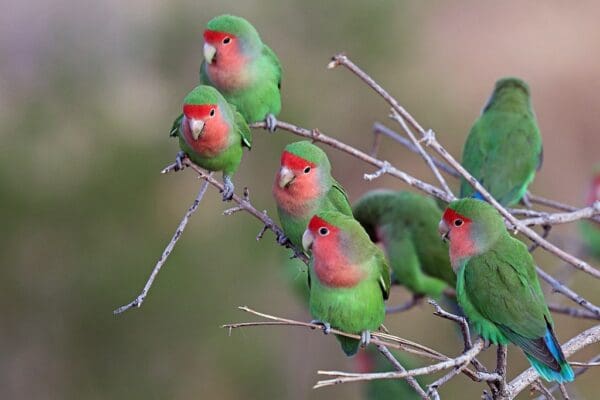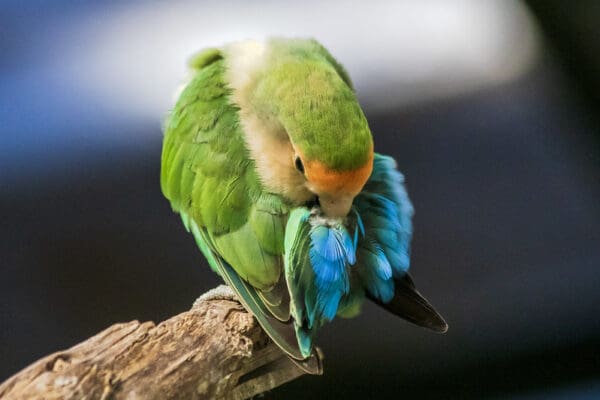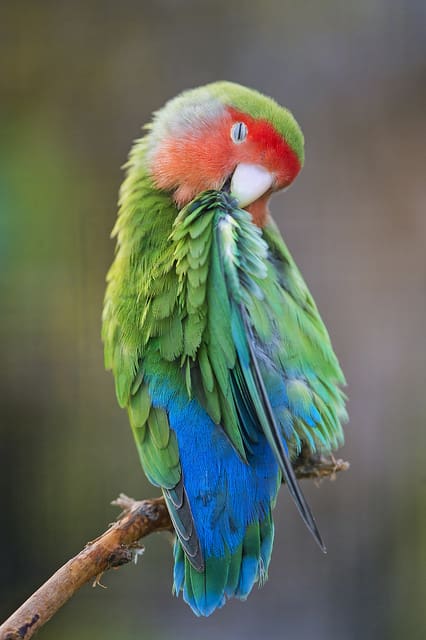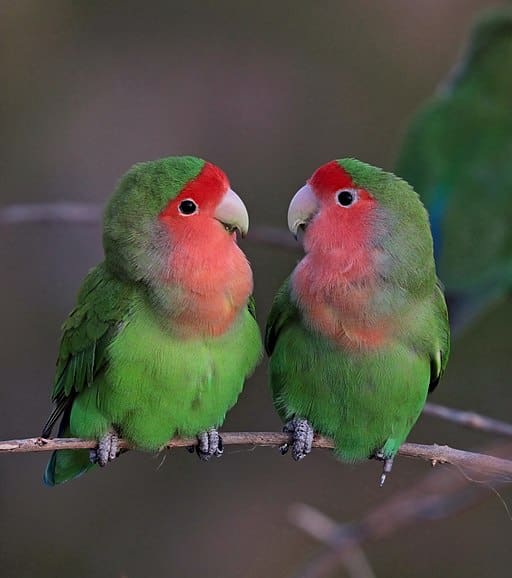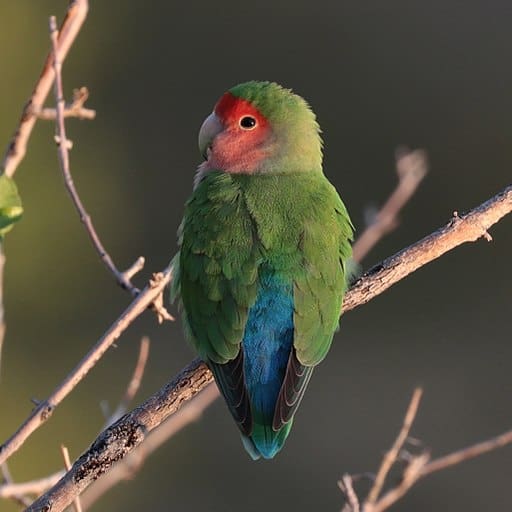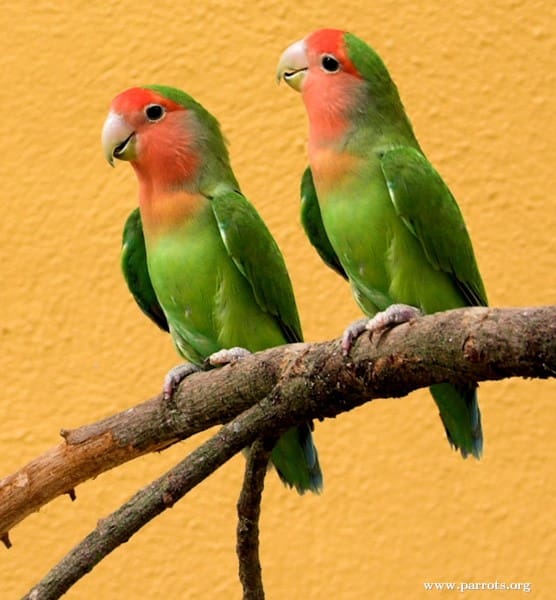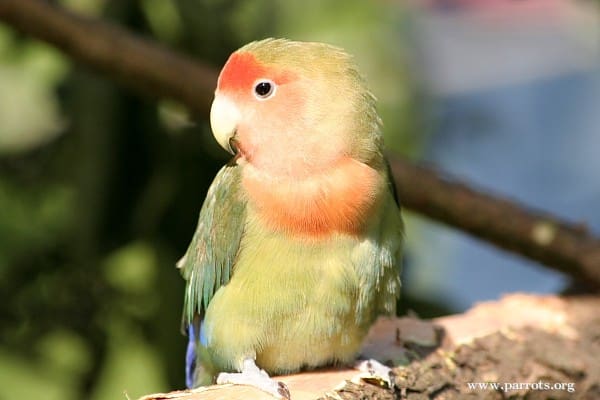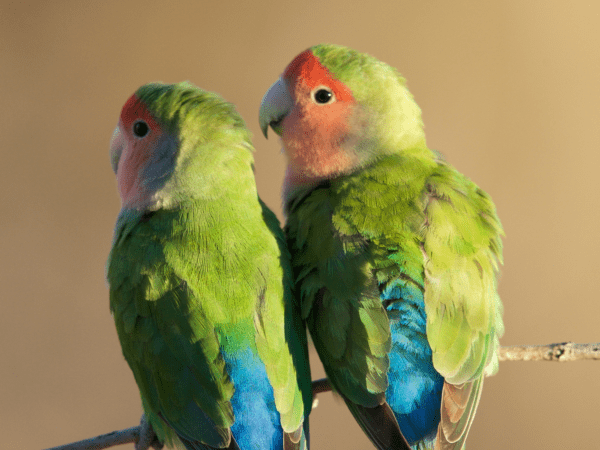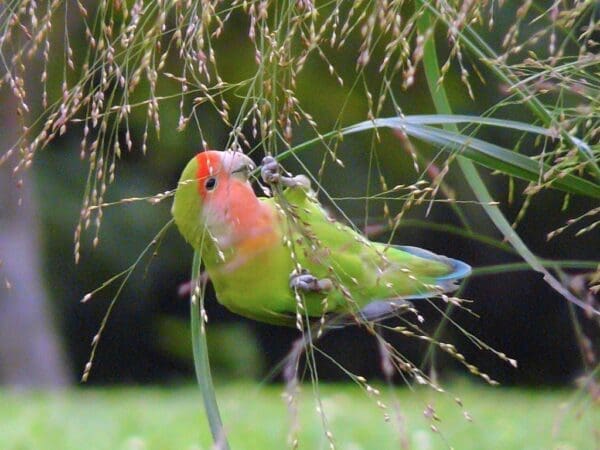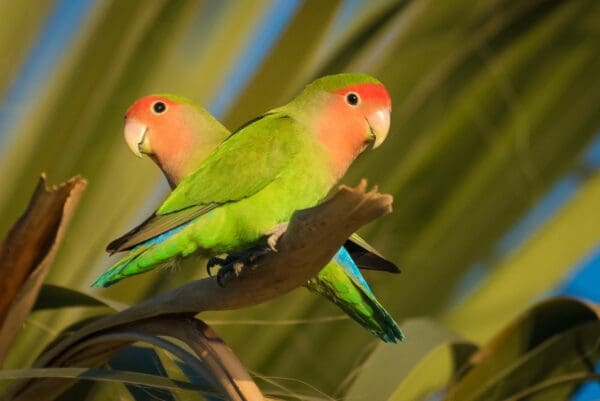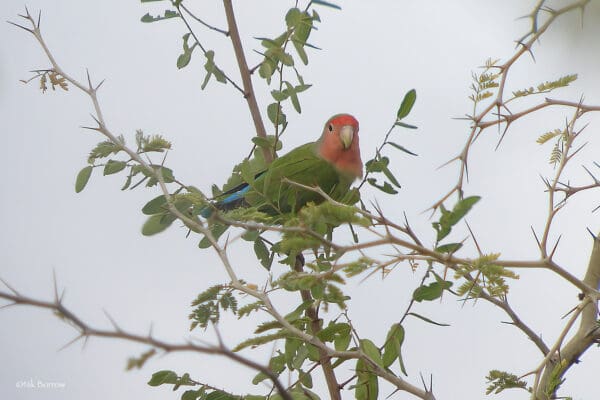Rosy-faced Lovebird
Also known as:
Peach-faced Lovebird, Rosy-headed Lovebird, Rose-ringed Lovebird
Also known as:
Peach-faced Lovebird, Rosy-headed Lovebird, Rose-ringed Lovebird
![© Charles J Sharp [CC BY-SA 4.0] via Wikimedia Commons Wild Peach-faced Lovebirds perch in a tree](https://parrots.org/wp-content/uploads/1990/09/Peach-faced-Lovebird-100x100.jpg)
![© Raphael Saldana [CC BY-SA 2.0] via Flickr A companion Peach-faced Lovebird preens itself](https://parrots.org/wp-content/uploads/2023/01/wpt_Peach-faced-Lovebird_1294-16-100x100.jpg)
![© Tambako the Jaguar [CC BY-SA 2.0] via Flickr A Peach-faced Lovebird preens itself](https://parrots.org/wp-content/uploads/2023/01/wpt_Peach-faced-Lovebird_1294-15-100x100.jpg)
![© Charles J Sharp [CC BY-SA 4.0] via Wikimedia Commons Peach-faced Lovebirds perch on a twig](https://parrots.org/wp-content/uploads/2023/01/wpt_Peach-faced-Lovebird_1294-14-100x100.jpg)
![© Charlesjsharp [CC BY-SA 4.0] via Flickr A wild Peach-faced Lovebird perches on a branch](https://parrots.org/wp-content/uploads/2023/01/wpt_Peach-faced-Lovebird_1294-11-100x100.jpg)

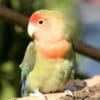
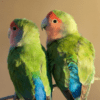
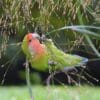
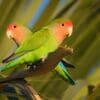
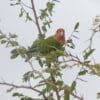
DID YOU KNOW?
Nesting material, especially bark, is carried by the female Rosy-faced Lovebird tucked into its rump feathers into the nest.

Agapornis

roseicollis
Size:
15 cm (6 in)
Weight:
46-63 g (1.6-2.2 oz)
Subspecies including nominate:
two: A.r. roseicollis, A.r. catumbella
Colour Adult:
A.r. roseicollis: Both adults red forecrown to area behind eyes; rose/pink on face and upper breast; bright blue rump and upper tail coverts; green tail, the side feathers black at base, bordered orange/red and banded black near end. Beak horn in colour. Eye dark brown.
A.r. catumbella: Both adults deeper red forecrown; more red in cheeks.
Colour Juvenile:
A.r. roseicollis: As in adults but with green forecrown washed with rose/pink; rose/pink face to upper breast washed with grey/blue. Beak horn in colour with black at base.
Call:
Are recorded as being shrill and metallic, in single notes or several in repetition. Speed of repetitions increase when alarmed. Some captive birds have been reported duetting.
More Information:
Content Sources:
CITES
BirdLife International
Cornell Lab of Ornithology/Birds of the World
Parrots: A Guide to Parrots of the World, Juniper and Parr, 1998
Parrots of the World, Forshaw and Cooper, 1977. 2010 edition
Parrots of the World, Forshaw, 2006.
Parrots in Aviculture, Low, 1992.
Captive Status:
Common
Longevity:
15 yrs
Housing:
Enclosure or aviary, indoors or outdoors if in warm weather, minimum length 1.2 m (4 ft).
Diet:
Small seed mix such as: mainly canary, also millet and oats; fruits such as: apple, pear, orange, banana; green leaves such as: Swiss chard, lettuce, sowthistle, dandelion; willow catkins; spray millet; rearing food made from: hardboiled egg, wholegrain bread and carrot, all ground to crumbly consistency; complete kibble for small parrots.
Enrichment:
Lots of climbing items: perches, ladders, swings, bells; bird-safe chewable vegetable tanned leather toys and wood toys, puzzle toys. Provide overhead misters or shallow water bowls for bathing.
Nest Box Size:
Vertical box 9″ x 6″ x 7″ (22.8 cm x 15.2 cm 17.8 cm) to accommodate bulky nest material.
Clutch Size:
4-6
Fledging Age:
6 weeks
Hatch Weight:
—
Peak Weight:
—
Weaning Weight:
—
World Population:
Unknown but described as locally common, decreasing.
IUCN Red List Status:
Least Concern
CITES Listing:
Not categorised
Threat Summary:
Heavy trapping and export of thousands of birds for the trade has caused declines in S Angola and possibly elsewhere.
Range:
A.r. roseicollis: Namibia and N Cape Province, Republic of South Africa, to Lake Ngami, Botswana.
A.r. catumbella: SW Angola. Introduced in Quicama National Park, NW Angola.
Feral populations also in Phoenix and Tucson, Arizona.
Habitat:
Found up to 1500 m (4920 ft) in dry wooded areas, also sub-desert steppe, savanna woodland with sparse tree cover, woodland belts along rivers and cultivated land.
Wild Diet:
Mainly seeds including Alibizia grasses, Acacia and buds and foliage of various plants including Euphorbia.
Ecology and Behaviour:
Seen in groups of 5-20 birds but may form larger congregations of several hundred where grass seeds are ripening or a water source. Groups of birds will huddle together on branches in cooler weather.
Clutch and Egg Size:
4-6 rounded eggs, 24.0 x 17.5 mm (0.9 x 0.7 in).
Breeding Season:
February-April, July in north of range. Nests in rock crevices and abandoned nests, also buildings and bridges. Nest is cup-shaped and made of plant debris.
